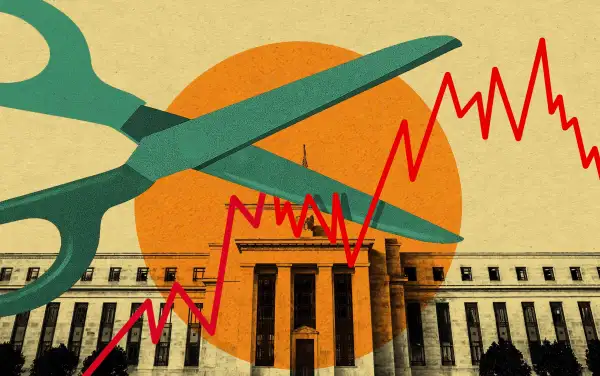Trump Wants Lower Interest Rates. Here's Why the Fed Isn't Budging
Money is not a client of any investment adviser featured on this page. The information provided on this page is for educational purposes only and is not intended as investment advice. Money does not offer advisory services.

President Donald Trump hasn’t pulled any punches when it comes to criticizing Federal Reserve Chair Jerome Powell about interest rates. Recent days have been no exception, as better-than-expected employment and inflation data gave Trump fresh fodder to lambast Powell for the central bank’s stance on interest rates.
Trump took to social media after inflation data for May, published last week, showed that overall inflation was running at 2.4% on an annual basis.
“Fed should lower one full point. Would pay much less interest on debt coming due. So important!!!" he wrote on his social platform, Truth Social, on Wednesday.
The president posted a similarly worded screed on June 6, after monthly jobs data showed that the economy created more jobs than anticipated in May. "Europe has had 10 rate cuts, we have had none.... Go for a full point, Rocket Fuel!"
The Fed's benchmark federal funds rate is currently in a range of 4.25% to 4.5%, where it has been since policymakers lowered it by a quarter percentage point last December.
What's ahead for interest rates in 2025?
For this week's Fed meeting, expectations for a rate cut fell from more than 8% a month ago to just 2% as of Thursday.
Unfortunately for Trump, there’s the potential that interest rates won’t be lowered at all this year. For all of the president’s ire, the irony is that this holding pattern is largely a result of his aggressive pursuit of global tariffs.
“It’s still unclear how President Trump’s widespread tariffs will play out and impact inflation and economic growth rates,” Mike Dickson, head of research at Horizon Investments, wrote in a recent research note. “Given this uncertainty, there is little incentive for the Fed to act.”
“Our base case for quite some time is that there will be no rate cuts for the remainder of the view,” says Andrzej Skiba, head of U.S. fixed income for RBC Global Asset Management. “Inflation remains elevated, and secondly, there will be an additional inflationary stimulus from the trade war."
While tariffs are the main wild card that Wall Street pros are keeping their eyes on, they're not the only one: Market observers say that the administration’s push for a tax reform bill, as well as its crackdown on immigration, also are likely to eventually affect the prices Americans pay for goods and services.
Wall Street expects that there will be some movement to lower rates this year, albeit not to the extent Trump is demanding. CME's FedWatch tool, which uses futures market activity to make rate projections, finds a roughly 5% chance that rates won't budge at all.
The likeliest scenario is for two cuts of a quarter percentage point each later in the year, but there's a considerable amount of uncertainty surrounding that prospect. This scenario has only a 40% probability, and markets are almost evenly split on whether they could go higher or lower if a different scenario plays out.
Recent news about progress in tariff negotiations and slower economic growth have given investors a reason to be optimistic about the path of inflation, Skiba says.
“Those potentially open the door to some rate cuts later this year, but it’s also really difficult to see how any rate cuts this year would be more than symbolic,” he says, pointing out that there is a limit to how effective those moderating factors can be.
For the Fed, the worst-case scenario would be a rate cut followed by a tariff-driven spike in prices that would force the central bank to raise rates even higher to contain inflation. By taking a wait-and-see approach, policymakers are leaving their options open.
In a research note, Seema Shah, chief global strategist at Principal Asset Management, pointed out that the way global supply chains operate means that tariff-driven price increases haven’t filtered through to the wide swath of consumer prices on which the government’s inflation calculations are based.
“We’ll likely need to wait until the late summer before the tariff impacts start to show through – either in the profit margin data or the inflation data,” she wrote.
In other words, despite what Trump — and borrowers — might want, officials are likely to sit tight on rates until they can be sure that a drop won't backfire on the economy.
More from Money:
Waiting for Lower Interest Rates? We Have Bad News
10 Everyday Items Trump's Tariffs Could Make Pricier
Americans Are Stressed About Inflation. New Data Says They Should Be

